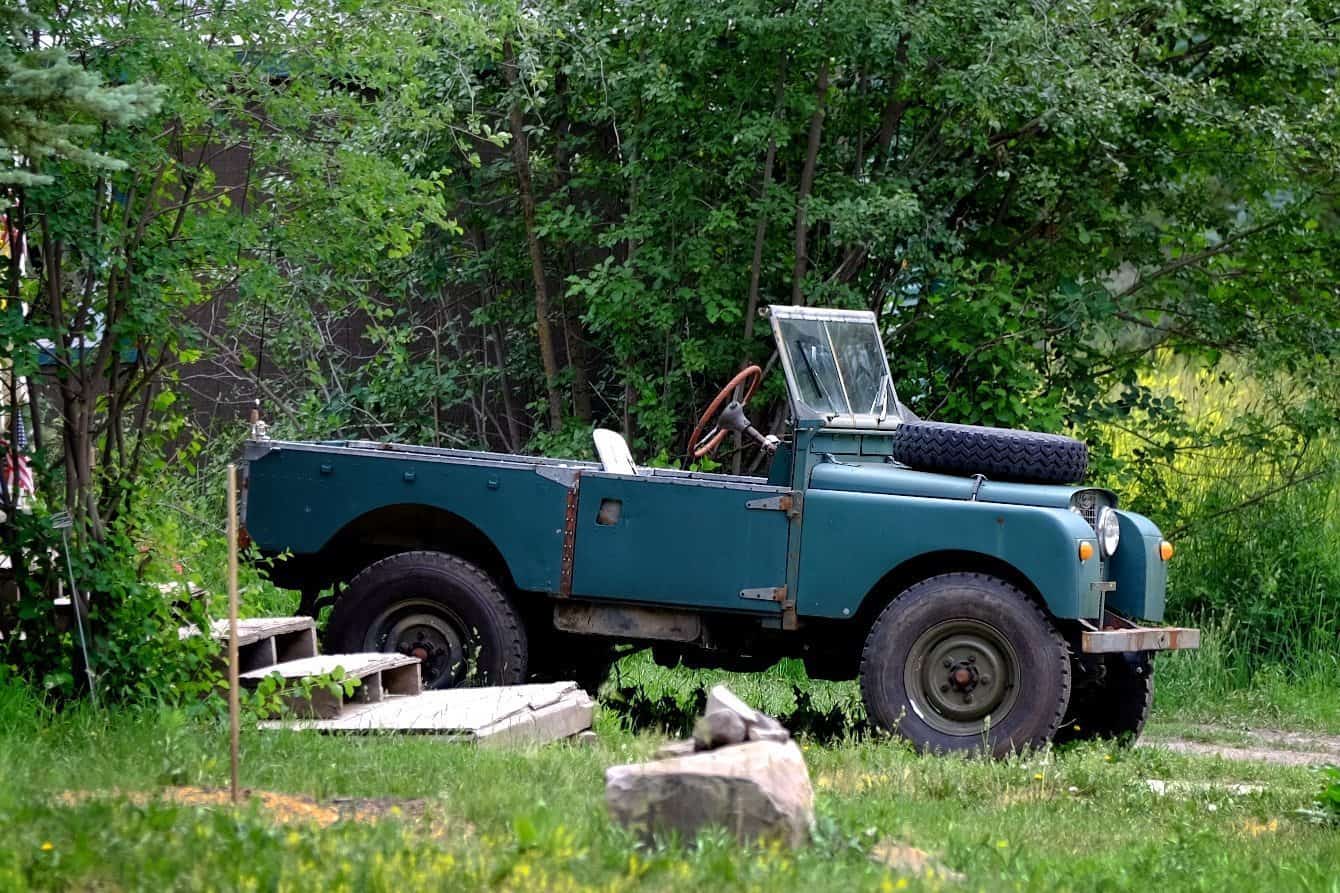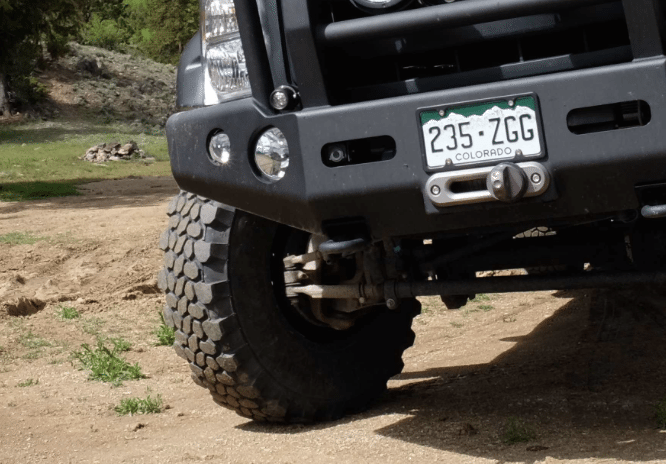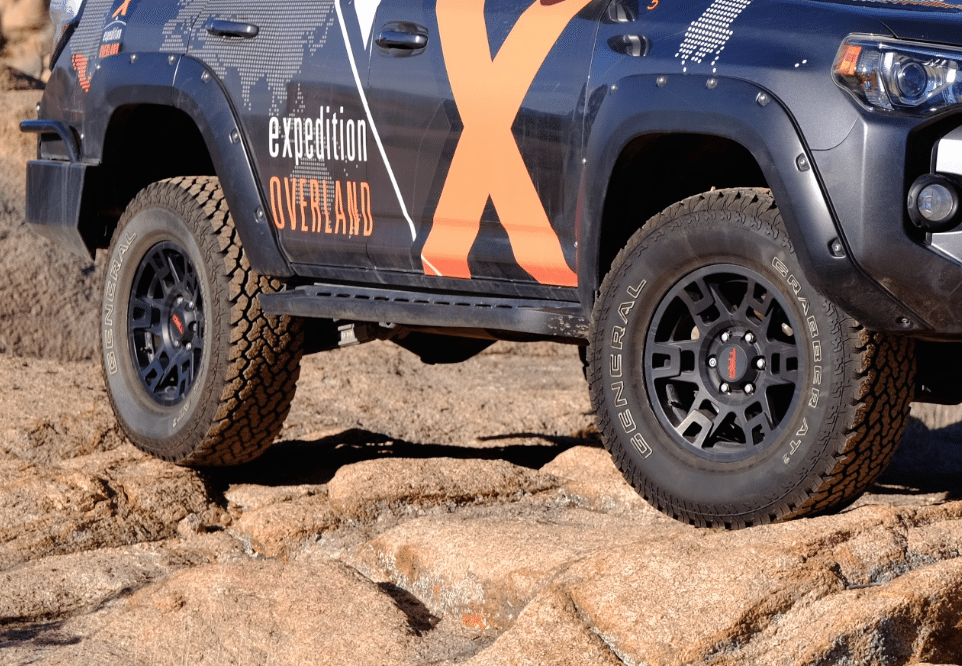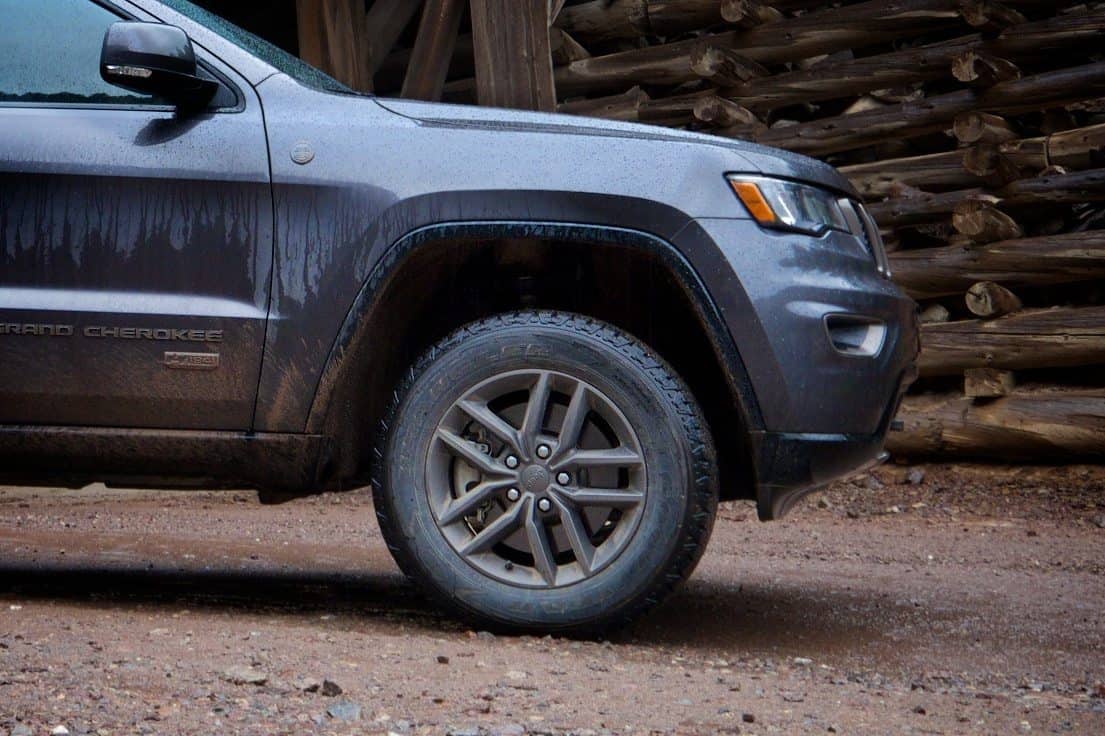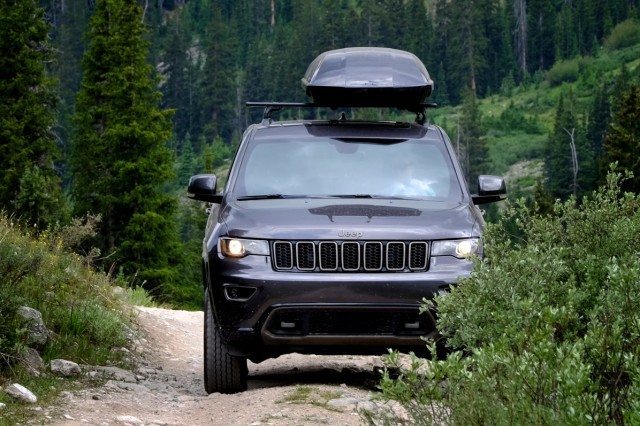You don’t have to be a petrol-head or 4×4 enthusiast to understand the value of a good set of tires. To steal a quote from Bib, the Michelin man himself, so much is riding on your tires. Not just a literal statement, it’s a shot across the decision making bow. Choose poorly and suffer the consequences.
Discussions of tire selection almost always distill themselves down to the purchase level where the end goal is to select the best tire amongst peer products. There isn’t much dialogue about what type of tire one should buy. For the overlander, that choice typically alternates between the aggressively lugged mud-terrain and the slightly less knobby all-terrain.
Which tire is best? The answer is––yes.
Okay, that didn’t help because there really is no definitive answer. How and where you drive has the most influence on your ideal tire choice. Complicating matters are other personal variables like where you want your tires to perform best. Then there’s the one element many enthusiasts sheepishly discount––aesthetics. Some drivers may benefit best from an all-terrain, yet prefer the brawny look of a mudder. If that’s you, don’t fret. That’s probably as legitimate a reason to buy anything, and no amount of evidence to argue otherwise will change your mind––and that’s okay. For the more analytical buyers, here is some food for thought.
Some tires just look appropriately paired to certain vehicles regardless of the tire-science.
No tire will ever be perfect for every situation. Your research will lead you to a particular style based on two possible scenarios. First, you might select a tire which suits the majority of the driving you do knowing it will occasionally be employed where it is less than perfect. Or, you can buy it to excel in those uncommon scenarios because that is were you need, or want, the tire to perform at its best.
In other words, if you drive tarmac 90% of the time and once in a while suffer a patch of mud, you may elect to buy a pavement-biased all-terrain and take your chances with the goo. If however, you drive 90% of your miles on pavement just to get to the mud, because you love it, then by all means buy the tire that excels in those conditions––the mud tire.
When deciding which is best for your actual needs, it’s good to know what attributes a given style of tire offers.
All-terrain tires
The Expedition Overland trucks are not only built to tackle sections of tough terrain, they’re built to cover the big miles of cross-continental journeys. The all-terrain is a smart choice offering better fuel efficiency, on-road safety, and a more comfortable ride.
As the name implies, these tires are designed to provide the best performance over the widest range of conditions. Some might dismiss that as the Jack of all trades, master of none. At any rate, a quality AT tire will provide reasonably good traction in most situations, and have a more durable casing than a road-only tire. For those reasons, the AT is most often the preferred format for the overlander covering long miles at swifter travel speeds.
All-terrain tires are invariably lighter than their mud-inspired counterparts and as such can usually offer better acceleration, easier balancing, and more consistent wear patterns. Most all-terrains are also heavily siped, which gives individual lugs added flexibility to better conform to the road surface for optimal traction in varied conditions. The smaller lugs and narrower voids also reduce vibration and noise, a negative attribute associated with more aggressive patterns.
Tires designed for moderately rough terrain are a common sense compliment to vehicles built for the same purpose. Putting a mud-terrain on some vehicles would detract from their well designed road attributes.
It seems counter intuitive, but all-terrain tires typically perform best in winter conditions, particularly on lose snow over hardpack. The small voids don’t get as packed with snow meaning there is more actual tire in contact with the ground. Some winter driving experts have commented that mud tires, when aired down in winter conditions, don’t conform as well to the road’s imperfections. These same qualities make the AT a better choice for deep and loose sand. The common talking point with regard to sand involves floatation. Some desert driving gurus say that mud tires are prone to dig into the sand rather than float atop it. The worst application for an AT is in mud where the low voids and complex tread patterns of most AT tires get mired easily, which should be of no surprise.
Mud-Terrain tires
Image credit: Scott Brady Icy roads and big voids are a bad combo. There isn’t much rubber contacting the ground which is precisely what is needed on slick and smooth surfaces.
Without overstating the obvious, mud terrains excel in––mud. The large lugs themselves are not the key to their muddy magic, it is the combination of big lugs and large voids between them. If designed well a mud tire will evacuate mud build-up with every rotation. Once mud gets hopelessly clogged in the treads, you effectively have a 300 pound drag slick. This is why you often see the mud experts spinning their wheels from time to time to help purge the lugs of muck.
The large voids on a mud-terrain have additional benefits. Tires are not just designed to grip and adhere to the road surface with friction, but they can also engage the terrain with contact called mechanical keying. This is the process by which a lug literally locks onto the road surface with the lug slotting into a feature on the ground. Think of a tire climbing up onto a ledge where the lugs snag the lip of the rock. For those reasons, mud-terrains are best for use in chunky loose rock where the tire can exploit the rough and uneven surface of the ground.
The penalty for the big lugs, extra rubber, and high voids is added weight, higher vibration on the highway, and in some cases, uneven wear and damage that can effect balancing or service life. In wet and slick conditions, the mud-terrain’s stiff lugs and compromised water-shedding qualities can degrade traction.
Image credit: Scott Brady These aggressive lugs are ideally designed to mechanically key with small features in the terrain. They literally claw at the ground to get a solid purchase.
These are not the only reasons why anyone would, or would not buy, an all-terrain or mud-terrain tire, but they do sum up the basics. For the traditional overlander encountering a well balanced mix of pavement, sand, snow, and a small amount of mud, the advantages of the all-terrain are hard to beat. This is not to say many overlanders predominantly cordoned to maintained roads don’t appreciate the added insurance mud-terrains afford. Any tire can travel pavement. Not every tire can overcome a short section of mud, and it usually only takes a little bit of it to stop you dead in your tracks.
Logical as these choices can be, there’s nothing to say you can’t shuck it all and go with the tire you like best for your own reasons. Tires are expendable and sooner or later you’ll get to experiment with the style and model of your choosing.



